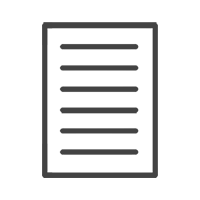Print Room & Framing Blog
The Art of Running a Creative Business with Architect and Artist Sarah Allderman
Share this article:

Explore the exciting world of art and interior design with architect and artist Sarah Allderman. Her designs combine practicality & aesthetics, making everyday spaces extraordinary.
We sat down with Sarah to uncover the origins of her creative journey, the secrets behind her successful business and the invaluable advice she has for aspiring artists and architects.
1. Please tell us a little about yourself
My name is Sarah, and I’m an architect. I love to scribble and draw the things I see. I grew up in Cape Town and still reside in the city. I have a small creative design studio where I focus on making things that help make people’s homes and spaces feel personal and beautiful.
2. Where did your artistic journey begin?
My mom was an artist. Growing up, our family was always creating things. After school, I studied architecture at UCT. There, I learned how to observe and analyse things. You develop a new perspective, all while dreaming up new spaces. My art is a representation of that process. Iterations of hand drawings, experimenting with digital processing, printing with different mediums and focusing on decorating and expressing myself to personalise my space. I’ve just shared my art with people, hoping they like it too. I wouldn’t call myself an artist, more a half decorative/ half inquisitive/half self-decorating person who likes sharing that with people in the hope that they like it too.
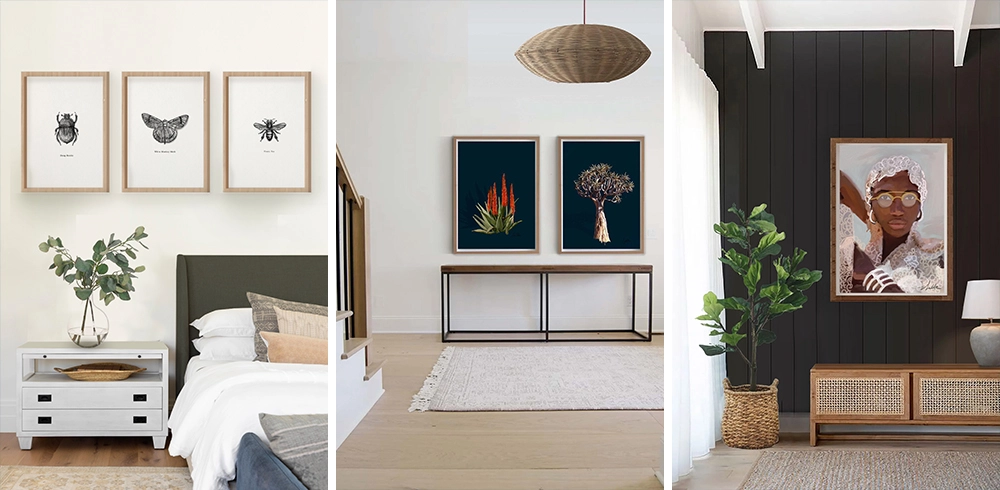
3. Please tell us a little about the art that you create. What inspires you?
My surroundings inspire me, and Cape Town has an endless supply of beautiful and inspiring things. People doing exciting things also inspire me. I like drawing familiar spaces as it allows you to see something special in the everyday. Drawing lets you slow down, focus on elements, and draw out what you’re appreciating. I use the things I draw to decorate the spaces around me in a continuous cycle of appreciation for those things.
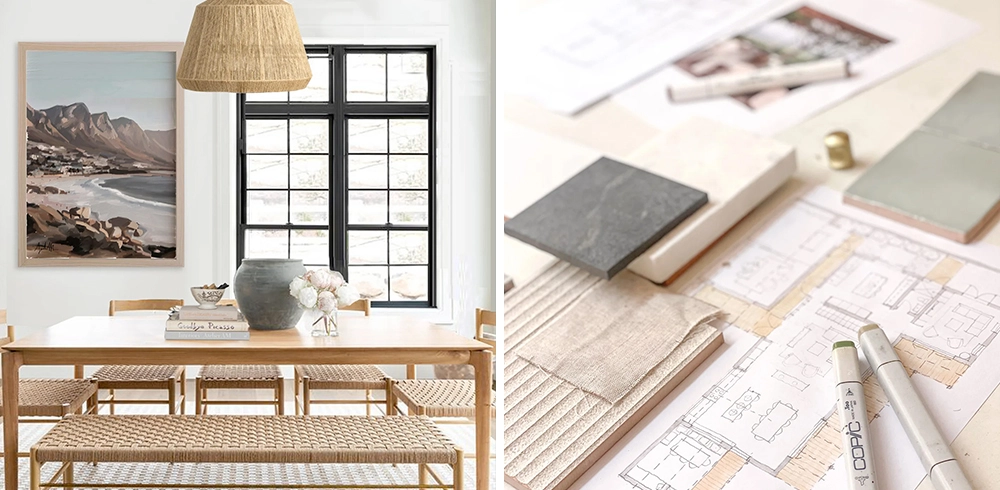
4. What motivated you to turn your passion into a business and sell your art prints and digital downloads?
I started at university. I was looking for affordable things to gift to friends or to personalise and build character into my space on a small budget. From there, friends started asking for prints, and it just grew from there. During lockdown, I wanted something fun to do, and the idea of creating digital works came about. I thought it was a great way to share something around the world in a way that was sustainable and accessible to people, connecting them during the lockdown. It still doesn’t feel like a business; it feels more like play.
5. Please walk me through the typical process you follow when starting a new creative project.
I approach my work architecturally. It starts with exploring Cape Town or being inspired by something or someplace. When I see something beautiful, I photograph it and take it to my studio, where I draw it up, scan it and then digitally overlay it. I also etch it and clean it up like you would stylise an architectural plan. I then figure out the best media to print it in. I then work out how to use it in a particular space. I’ll share that space on my Instagram and on my website and with people in case they’d like to do the same.
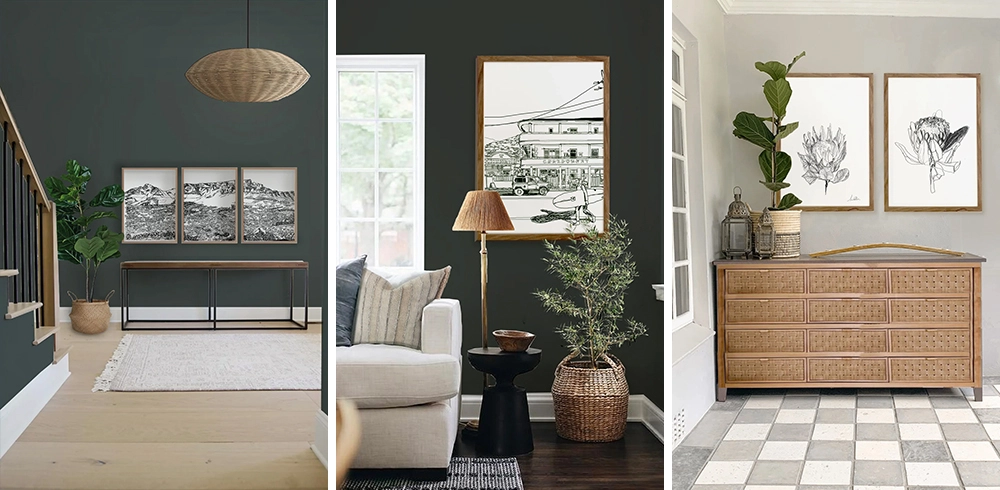
6. Can you share a project that you found particularly rewarding or challenging, and what did you learn from that experience?
I love all collaborative projects. Cross-sectioning different creatives’ trades makes for such interesting and different work. It allows for so much inspiration. At the beginning of a project, I always find it tricky to understand what different people are visualising. After a few iterations, it’s always amazing to see how two different approaches come together. It becomes such a rewarding process. I’m lucky to be able to collaborate with amazing people.
7. How do you market your artwork and increase the visibility of your art? How did you grow and expand your community of followers and supporters?
Instagram is such an incredible platform. One doesn’t need a physical space anymore. Instagram allows you access to so many creatives and links you with potential clients. I think the key to expanding your Instagram following (something I continue to struggle to get right) is probably consistency and authenticity. Those two things seem pretty important.
8. How did you go about setting up your online store? Which platform do you use?
Shopify, Shopify, Shopify! It’s SUCH a great tool for anyone who wants to start a store or small online business. Between Shopify and Instagram, you can set up your entire business yourself. And run it all from your phone, which is pretty incredible.
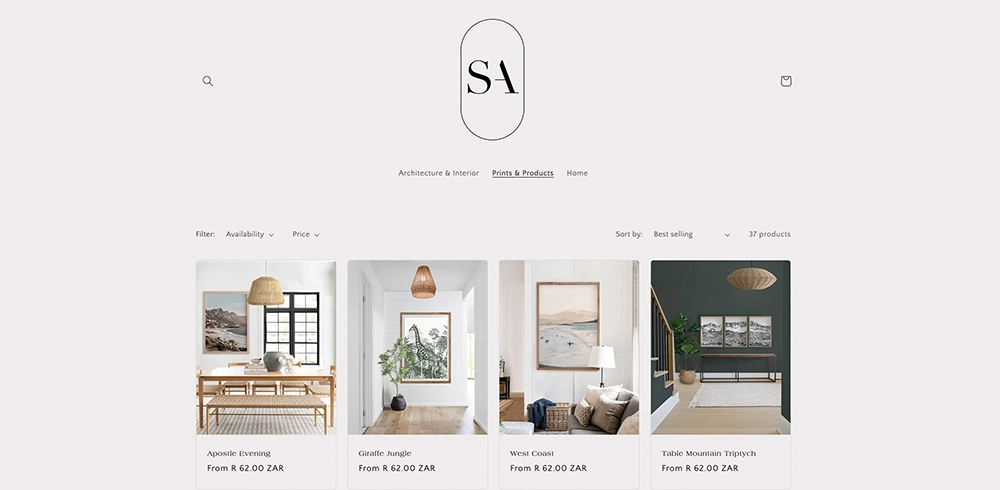
9. What tools and software do you primarily use for your creative endeavours?
I use quite a wide range for my artwork. I also love the process of playing with new software and seeing what the different capabilities are. The primary drawing tools that I use are Photoshop and AutoCAD.
10. What motivated you to choose Orms Print Room for your printing & framing fulfillment needs?
They really have everything you need and more. The printing becomes part of the design, and the possibilities of what one can do are endless. It’s incredibly inspiring to pop into the shop; it fuels you to want to create more. Also, their service and attention to detail is second to none.
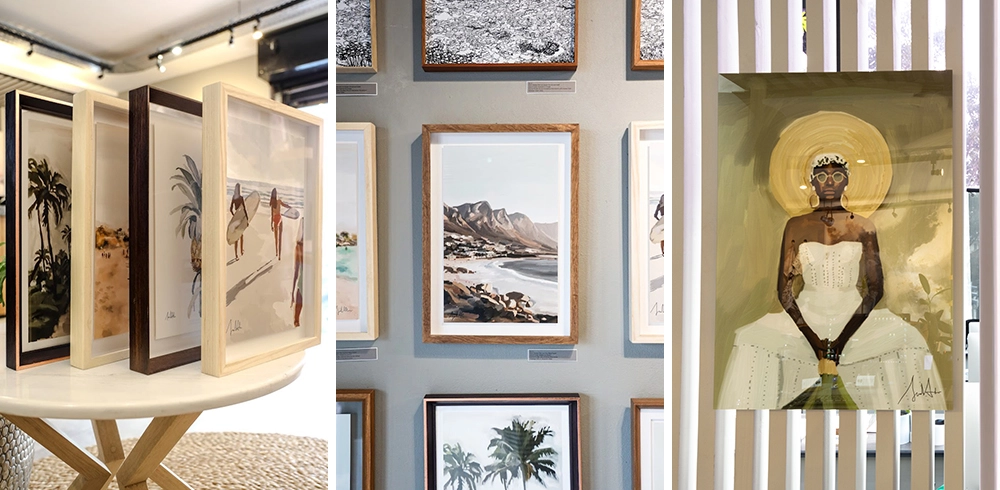
11. What advice would you give aspiring creatives who want to begin creating and selling their art?
Start asap! And start your website even sooner. It can sometimes be intimidating to begin something like that, but with the resources we now have available, I really couldn’t encourage everyone more. The hardest part is probably putting yourself out there, but after that, there are so many tools and communities to help you on your way.
12. What upcoming trends do you see emerging in the interior and print design industries?
I’m really excited about the new collectable and eccentric trends I see coming through. I think there’s a wave of personality coming through. We’re seeing organic shapes, big bold colours and quirky pieces. The industry is celebrating individual tastes as opposed to clean lines.





